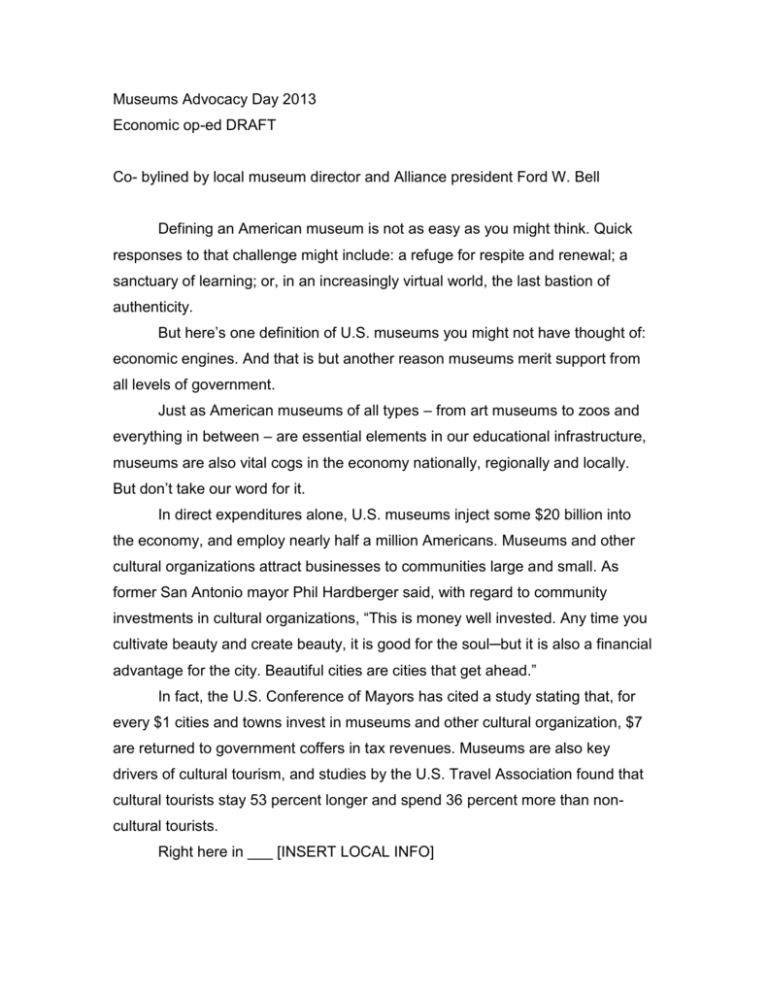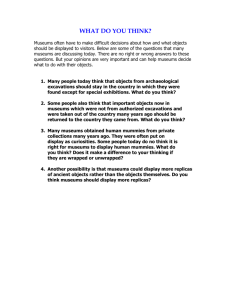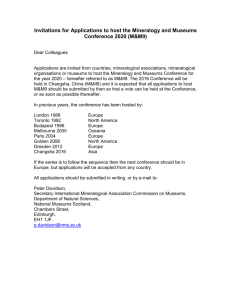Defining an American museum is not as easy as you might think
advertisement

Museums Advocacy Day 2013 Economic op-ed DRAFT Co- bylined by local museum director and Alliance president Ford W. Bell Defining an American museum is not as easy as you might think. Quick responses to that challenge might include: a refuge for respite and renewal; a sanctuary of learning; or, in an increasingly virtual world, the last bastion of authenticity. But here’s one definition of U.S. museums you might not have thought of: economic engines. And that is but another reason museums merit support from all levels of government. Just as American museums of all types – from art museums to zoos and everything in between – are essential elements in our educational infrastructure, museums are also vital cogs in the economy nationally, regionally and locally. But don’t take our word for it. In direct expenditures alone, U.S. museums inject some $20 billion into the economy, and employ nearly half a million Americans. Museums and other cultural organizations attract businesses to communities large and small. As former San Antonio mayor Phil Hardberger said, with regard to community investments in cultural organizations, “This is money well invested. Any time you cultivate beauty and create beauty, it is good for the soul─but it is also a financial advantage for the city. Beautiful cities are cities that get ahead.” In fact, the U.S. Conference of Mayors has cited a study stating that, for every $1 cities and towns invest in museums and other cultural organization, $7 are returned to government coffers in tax revenues. Museums are also key drivers of cultural tourism, and studies by the U.S. Travel Association found that cultural tourists stay 53 percent longer and spend 36 percent more than noncultural tourists. Right here in ___ [INSERT LOCAL INFO] But as substantial as is the impact of museums on jobs and local economies, the contribution of museums goes much farther. As state and local government budgets are continually stretched thin, many museums are taking up the slack, filling voids in our social and community fabric, bolstering communities in efforts to remain economically competitive. Certainly museums are critical tools for the estimated two million homeschooled children in the U.S. Art museums have created programs for Alzheimer’s patients and their caregivers, enabling them to enjoy the benefits of engaging with our artistic treasures. Other museums have led the way in working with children on the autism spectrum, providing a safe, comfortable day out for the children and their parents. Visionary children’s museums have become sanctuaries for families caught up in the juvenile justice system. Museums have served to bridge cultural and ethnic divides in communities, from bringing recent immigrants together to meld their old traditions with those of their new homes, to offering English as a Second Language courses. Many museums have led efforts to help our citizens upgrade their job skills through computer training courses. Here in . . . insert local angle Suffice to say that the mission of museums is public service, and we are constantly enhancing and expanding that service to our communities. And the public has shown its appreciation via the estimated 850 million visits to U.S. museums annually – more than the attendance at all major league sporting events combined. All we ask in return is that the public let their elected officials know how much they appreciate their local museums, as economic drivers, as educational pillars, and as community assets.




